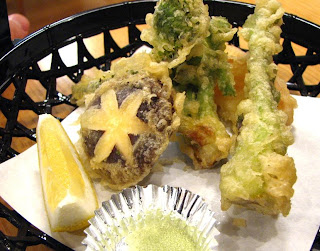Tea ceremony is a way of welcoming guests. It isn't just about drinking tea, it also involves a meal, a traditiona Japanese meal.
Before the guests enter, the teishu(亭主, host) fills a tsukubai(蹲踞, stone basin) with fresh water and then washes his hands and mouth. The guests are welcomed with a bow. Everyone remains silence. At the stone basin, the guests and host's assistant purify themselves and enter the teahouse through a sliding door that is just three feet high. To enter everyone has to bow, and this symbolises equal regardless of status or social position. The last person to enter puts the latch on the door.
In the tea ceremony, water represents yin(陰, the dark side), whilst the fire in the hearth represents yang(陽, the sun), as influenced by the Chinese. A jar called the mizusashi(水指) holds fresh water and symbolizes purity and only the host touches it. The green tea is called matcha(抹茶) in Japanese, and it is kept in a small ceramic container.
The host cleans the tea container and tea scoop with a fukusa (ふくさ, silk cloth). He fills the tea bowl with hot water and rinses the whisk. He then empties the tea bowl and wipes it with a tea towel. The host lifts the tea scoop and tea container and places three scoops of tea per guest into the tea bowl. Additional water is added to the paste until it is the consistency of cream soup, returning any unused water to the kettle. The host passes the tea bowl to the main guest first, and he will have to bow and accept it. The main guest admires the bowl by raising and rotating it. He then drinks some of the tea, wipes the rim of the bowl, and passes it to the next guest who does the same thing.










